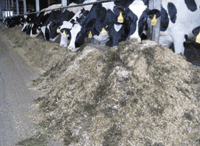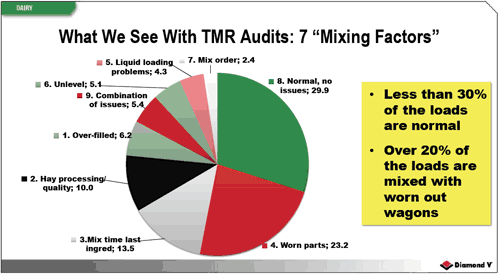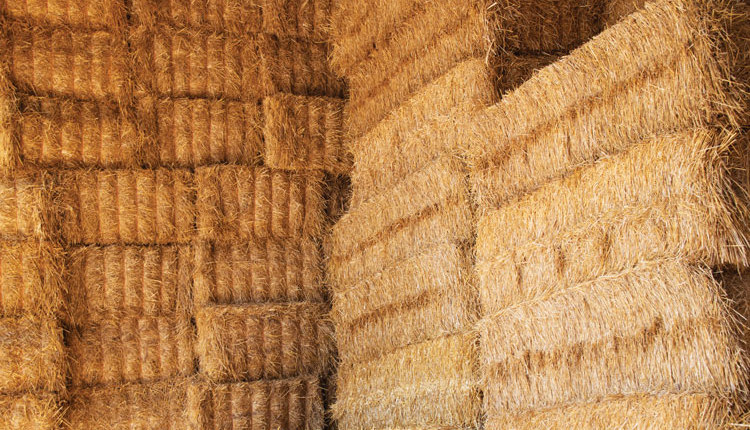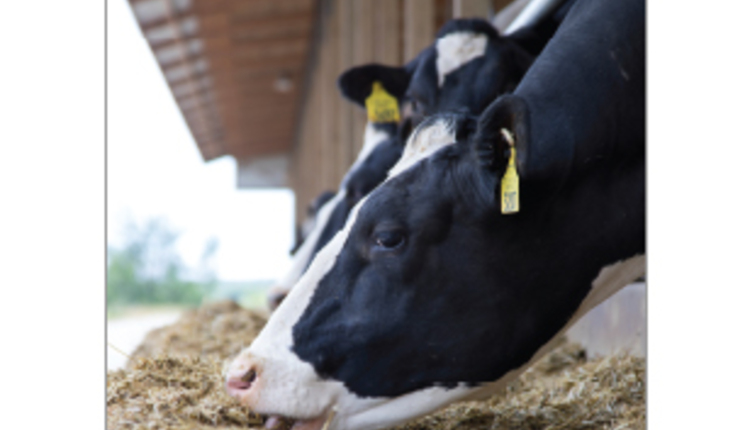 "Consistent, efficient TMR feeding" was the topic of yesterday's webinar presented by Tom Oelberg of Diamond V. Oelberg has conducted hundreds of TMR audits and has seen several areas of concern for those mixing feed. He pinpointed several areas to focus on.
"Consistent, efficient TMR feeding" was the topic of yesterday's webinar presented by Tom Oelberg of Diamond V. Oelberg has conducted hundreds of TMR audits and has seen several areas of concern for those mixing feed. He pinpointed several areas to focus on.With producers having feeding habits that have been repeated for years, more than 70 percent of total mixed rations have mixing issues. These inconsistencies in TMRs can cause sorting, higher feed refusal and digestive issues for the herd – all of which can lead to lower milk production and reduced fat and protein percentages.
1. Overfilling – If there is not enough drop and mixing clearance, your ration consistency will suffer.
2. Hay processing – Hay should be added early in the mixing process and be prechopped to 6 inches. Straw should be in the 2-inch range. This will reduce separation of hay during mixing in the wagon and sorting in the feedbunk.
3. Mix times -When the last ingredient has been added, the feed should be mixed for 3 to 5 minutes.
4. Worn parts – Look at the kicker plates and blades on your equipment. While they still may be sharp, they could be worn and not properly mixing the ration.
5. Liquid loading problems – Liquids such as molasses, whey or water should be added at the end. Even distribution, preferably through a manifold, is important for ration consistency.
6. Unlevel - Is the tractor and mixing wagon on level ground? Is the wagon itself level? If not, feed can gravitate to one end of the wagon and cause ingredients to not mix well.
7. Mixing order – The sequence of ingredients can play a key role in consistencies in rations. Hay (prechopped) should be added first, then premixes and minerals (their smaller volumes necessitate being added early in the mixing order), then corn silage and liquids.

The webinar had several video clips, demonstrating improper feed mixing and the results when these seven factors were corrected. On one farm, adjustments improved production by 8 pounds per cow per day. While higher milk production is certainly important, added benefits includes less sorting and fewer feed refusals. Watch the webinar for yourself and see if there are areas that can be improved on your operation to improve TMR consistency and efficiency. The webinar was brought to you by Kuhn North America and is online now at this link.









